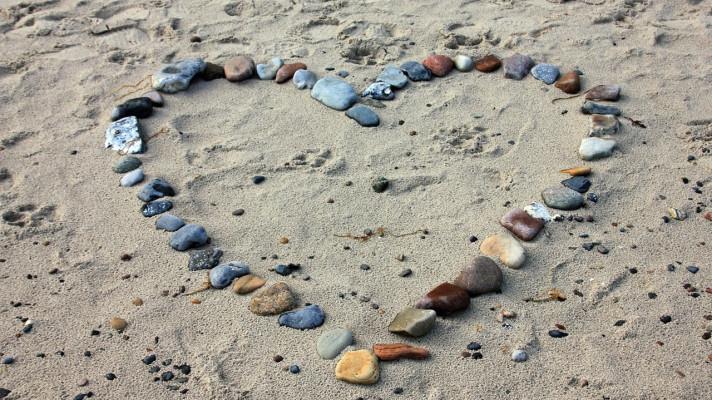Srbsko: Navštivte pohoří Kopaonik (Serbia: Visit Kopaonik mountains)
Among Yugoslav mountains, Kopaonik is unrivalled by its natural beauty and mineral wealth. Its boundaries are set by quite distinct natural borders-the deep valleys of the Ibar, Jošanica, Rasina, Gornja Toplica and Lab rivers. Kopaonik, the biggest mountain of the central Serbia, spreads its wide mountain-ridge 82.7km long, its greatest width being 63km, in the direction from the mountainous region over Kosovska Mitrovica, to the north-west over the series of peaks higher than 1600m, to the highest part of the massif called Ravni Kopaonik (Flat Kopaonik) with the peaks: Gobelja (1934m), Karaman Vucak (1936m), Suvo Rudište (1976m) and Pancicev vrh (Pancic Peak) (2017m). The northern border of the massif is separated from the massif of the mountain Željin by the rivers Jošanicka reka and Koznicka reka. At the western side, along the whole Kopaonik mountain-ridge, the river Ibar gorge is placed. The eastern side is bounded by the rivers Rasina and Toplica valleys. It is very spacious, taking up a full 2756 square kilometers.
By its geographical location, Kopaonik is predestined to be a large to Europe. The Ibar, Zapadna Morava and Toplica highways provide for easy access from the large industrial centers of Šumadija, Pomoravlje, Toplica, Kosovo and the Skopje valley (Skopska dolina). Due to good asphalt roads and railways, the mountain can be reached in five hours' time even starting from Belgrade, which is about 250km away.
In its highest part, Kopaonik somewhat resembles a flat-roofed house; its side are almost wall steep and the top so level that it induced the people to aptly name is Flat Kopaonik (Ravni Kopaonik). The western sides of the mountain are a little steeper than the eastern, but also more inaccessible and bare. Kopaonik is rich in cold and radioactive waters at higher altitudes and hot ones in the lower parts.
The main features of Kopaonik relief were formed some 70 million years ago. Great movements of the earth's crust brought about folding and strong splitting, cleaving the steep sides facing the bordering valleys. Longitudinal and transversal fissures dissected to a large degree, the interior parts of the mountain as well. Deep clefts thus formed created a path for the flow of andesite-basalt rock, giving birth to the most extensive eruptive mass in Serbia, and therefore to great mineral wealth-the most important ores (iron, copper, lead, silver and other metals) are linked with dacites and andesites. Chromium and magnesium ore deposits formed in the serpentine-peridotic rock. Erosion created the wide plateau of Ravni Kopaonik and the highest peaks from the more resistant rock. Cascading rivers and snow carved rugged valleys in the areas of softer, especially serpentine rock, which is dominant in the western region of the mountain, increasing, therefore, the slope, inaccessibility and picturesque quality of the terrain.
Kopaonik, where people used to work mines from old times, was named after its ore resources (kopati-to dig). The volcano activity and discharge of hot mineral solutions caused changes on the nearby old rocks because of high temperatures and heavy pressures. That is how "mining region of Kopaonik" came to be, with a large numbers of mines from old times. In Kopaonik region, besides the usual ores: metals iron, lead and zinc, there are rare metals silver and gold and rare minerals: volastonite, fluor-spar, asbestos and other.
The process of erosion has created interesting forms of relief, which attract the attention of mature lovers. Some are made of granite and look like giant heads of cabbage, weighing two to three tons, falling apart and splitting as if shedding their shells. They can be seen in several places along the Jošanicka Banja-Ravni Kopaanik road. Others are a potpourri of rocks of unreal beauty, like the Kozje Stene on the slopes of Kukavica and along the left bank of the Samokovska River. Third are groups of oddly aligned or scattered blocks of large-grain granite, resembling giants turned to stone. Such an example is Markov Kamen (Marko's rock), "the most beautiful geomorphological natural rarity" on Kopaonik.
Natural monuments: Geomorpholigical monuments-stone granite sculptures: Lisicja stena, Pajin grob, Suvi vrh, Jankov breg, Babin grob, Visoki deo, Karaman-Vucak. Geomorphological monuments-traces of Pleistocene glaciation: Circ Krcmar, Circ Široki do, Circ Velika Gobelja. Geological monuments: Velika stena, Velika Sijaca, Jelica, Žljeb, Gvozdac, Oštri Krš. Hydrological monuments-springs and fountainheads: Fountainhead Duboka, "Geyser" Gvozdac, Spring Marina voda, Spring Krcmar, Waterfall Barska reka, Semeteško jezero-lake. Hydrological monuments-strictly protected water-courses of the river basins: Samokovska reka, Gobeljska reka, Barska reka, Brzecka reka, Duboka reka.
More on:http://www.kopaonik.net/eng/_html/about_themountainofsunandsnow%20.html
ZDROJ:: www.kopaonik.net
